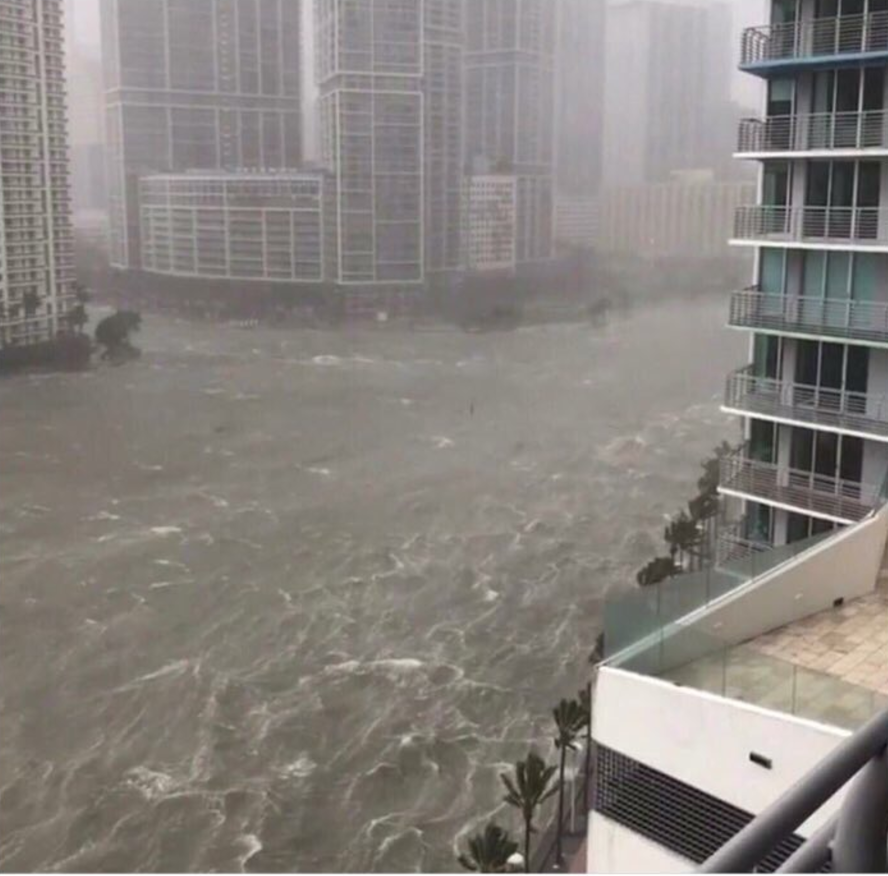So many times over the years we have called reporters to ask how things are going in midst of some calamity or another. I write this update sitting in St. Petersburg, Fla., which is forecast to be in Hurricane Irma's path.
Let me offer some thoughts based on my hurricane experience and as one who now depends on the work of journalists working through this storm.
Go low on adjectives
By now we all know this is a "monster," "historic," "frightening," "deadly" event. My rule of thumb is "the more vital the information, the more factual the reporting." Report wind speeds, storm surges and rainfall amounts without any additional padding.
Explain everything
I am amazed by the number of Floridians who do not know how storm surge works.
You will, no doubt, be tempted to attribute Harvey and Irma to climate change. But it is too simplistic to say that. Hurricanes are common this time of year, but the issue, experts say, is they seem to be becoming more severe.
Hurricanes are measured according to their wind speed on a scale of one to five.
There is a great debate, and not even a new one, about whether we need a new scale. Some experts say we need a new scale that has a new category for storms like Irma and one that goes beyond wind speed to include rain and storm surge.
Try not to reward stupidity
On the one hand, we all want to see amazing video from people taking risks. On the other hand, when you air or post that video you maybe rewarding and even encouraging that behavior. When you post video that clearly involved some risk-taking, make sure you point out what a terrible idea it was and how that kind of behavior puts rescuers at risk. By the way, the video I just linked to of a person standing in strong winds just to measure wind speed is dangerous for no good reason. The weather service gives us that data. Standing outside with an anemometer is a stunt, not science.
Florida is noted for remarkably stupid news stories, but the one that sparked a sheriff to tell people not to fire weapons at the hurricane set a new bar.
 Check before posting, attribute everything
Check before posting, attribute everything
As Irma moved through South Florida, this image of Miami emerged as the first look of damage. But it is not downtown Miami. It's the inlet of the Miami River. Miami is flooding, no doubt about that, which makes it more difficult to sort the real context from the wrong context.
FEMA has an interesting rumor-control website.
The deadliest time is AFTER the storm
The reality is that people perish after hurricanes not just during them. They think they survived then they do something risky. They run a generator in their garage and fill their house with carbon monoxide, they fall off the roof trying to fix shingles, they lean over roof ridgelines and lose their balance. Chainsaws are particularly dangerous, especially in the hands of amateur lumberjacks. How many times after Harvey did we see people driving into water without knowing how deep it was?
Don't forget Harvey
Texas still needs help. We will see if the big charities and government agencies can multi-task. FEMA is advertising local hires in Texas and Florida, who are brought on for 120-day terms with extensions up to one year.
Florida won't need used clothes or unused medicine
It's always good to emphasize this after any disaster, when well-meaning people send everything from used clothes to teddy bears to unused medicine to the victims. It creates a sort of second disaster for relief workers to have to find a way to dispose of the useless stuff. It may not feel as warm and fuzzy as sending blankets, but when you donate money to reputable charities, they can purchase what they need and they can purchase it tax-free and buy massive amounts of supplies in bulk at much lower prices. That's not to say that all material donations are worthless. In the initial days after a storm, volunteers who truck in water, food and essential supplies can be lifesavers. I listened to animal rescue workers in Texas a couple of weeks ago asking for special horse feed for diabetic animals. I heard a person from out of state rounding up the food and figuring out how to deliver it. I didn't hear anybody wishing somebody would truck in a load of used tennis shoes.
Be careful with drones
As a licensed drone pilot, I hope we can show that post-storm drone photography will be valuable. But remember that emergencies do not lift air space restrictions:
1. Never interfere with rescue aircraft.
2. Do not fly in restricted zones, especially near airports.
3. Do not fly in high winds or rain.
4. Never fly over people.
5. You must retain visual contact of your aircraft at all times.
Think forwardly
Journalists have to be thinking about what people need next, not just what they need now. Here are some examples:
— What you will need when FEMA arrives at your house.
— How to get insurance payments. The Houston Chronicle's reporting after Harvey said, "For homeowners with mortgages, the money will go first to the financial institutions that hold their mortgages. Only after homeowners can prove they have done the repair work will banks and other mortgage holders release the funds." The Chronicle also reported, "Photos of the damaged property are not enough; adjusters working through the federally administrated flood insurance program require the actual damaged building materials and contents. Store them in the backyard, in the driveway or garage."
— What you must document: FEMA has a list
— What do I do with wet carpet, clothes, furniture, bedding?
— What happens to all of the cars and trucks that get flooded? How do you know if your flooded car is salvageable? The Washington Post posted this comprehensive piece after Harvey hit Texas.









